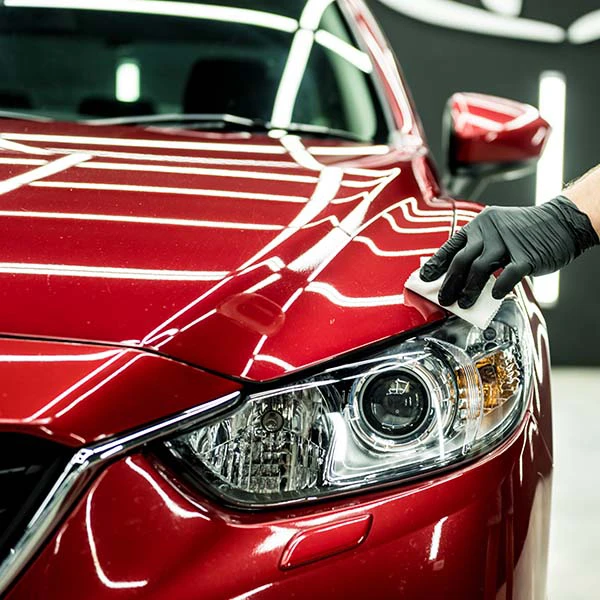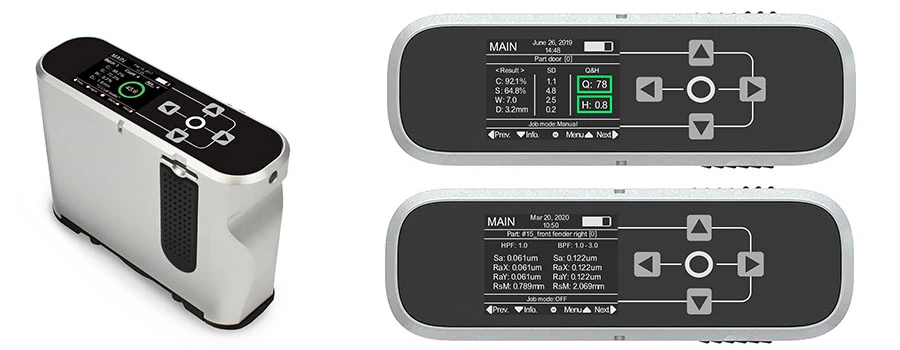How to Evaluate Automotive Finishing With Ease

In today’s competitive automotive industry, quality control of vehicle body parts is increasingly important. A customer’s first impression of a vehicle is undoubtedly influenced by its exterior appearance; a flawless exterior with smooth paint finishing is usually interpreted as a sign of superior quality. Achieving this appealing visual appearance requires evaluating the paint finishes of the vehicle. The evaluation of paint finishes based on color alone is insufficient. Attributes like the reflected image clarity and roughness of the painted surface also define the paint finishing quality.
Reflected Image Clarity (Orange Peel) Measurement
The clarity of the reflected image on the painted surface can be evaluated by assessing the orange peel effect, a painting defect. Orange peel evaluation can be done visually or with the help of measurement instruments. Visual evaluation of orange peel generally requires large and costly equipment (e.g., fluorescent lighting, etc.) and relies on subjective interpretation by individuals.
Measurement instruments can provide objective and quantifiable data on the orange peel effect. However, depending on the instrument used, it may have drawbacks. For instance, conventional measurement instruments that use laser light to measure surface unevenness focus on the surface. Considering that our eyes tend to focus on the reflected image on the surface, this leads to a poor correlation between the conventional measurement instruments and visual evaluation. Furthermore, their measurement data are divided and reported in various frequency bands that require specialized knowledge to interpret.
Surface Roughness Measurement
The quality of the paint finishing isn’t only determined by the effectiveness of each paint and coating process but also by the surface quality of the underlying base material like steel and aluminum. No matter how well the paint and coating are applied, orange peel will still show through if the base material they are applied on is rough. Evaluation should start from the base materials in order to control and reduce orange peel. They cannot, however, be measured in the same way using the conventional orange peel technique owing to their diffusing properties and the lack of reflected image on their surface. An additional instrument (e.g., white light interferometer) is required to quantify the surface roughness.
Rhopoint Total Appearance Measurement System (TAMSTM)
Rhopoint TAMSTM is an innovative appearance measurement instrument developed in close collaboration with major automotive manufacturers. It is not only capable of orange peel evaluation with good visual correlation but also surface roughness measurement, providing a comprehensive and cost-effective solution to manage and control product appearance.
Through its advanced parameters and indices like contrast, sharpness, waviness, dimension, quality, Sa, Ra, etc., TAMSTM can provide easy and objective quantification of all types of surfaces, including raw materials, E-coat (and filler), C-coat, etc.

Quantifying surface appearance quality is made simple with TAMSTM. Check out this white paper to learn about orange peel and surface roughness measurement with TAMSTM.
Interested to learn more about automotive appearance measurement? Watch this on-demand webinar to understand better the optical measurement methodology of automotive surfaces.
Need help finding the right solutions for your applications? Arrange a free consultation with our application specialists now.
